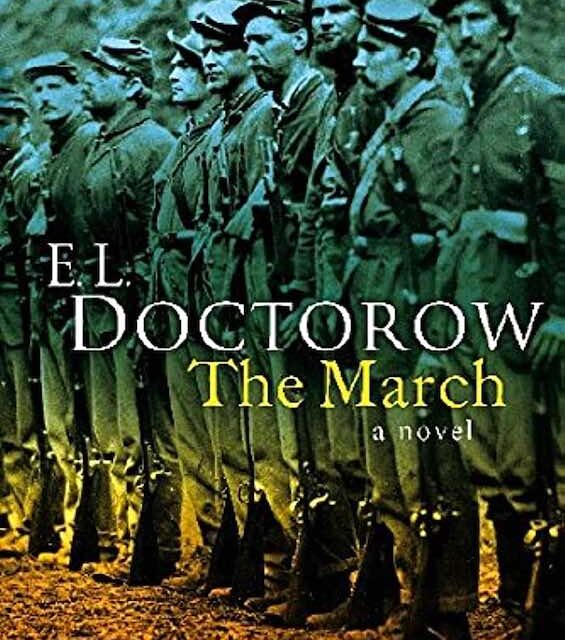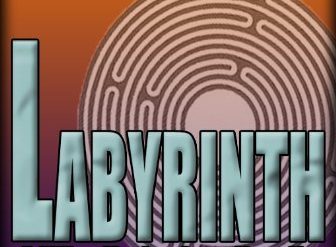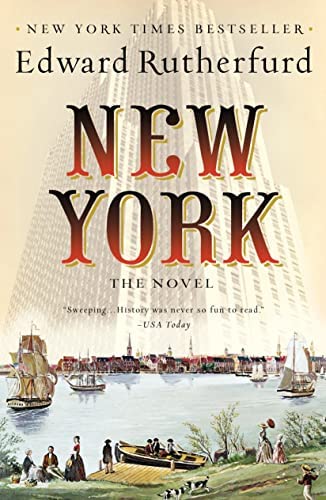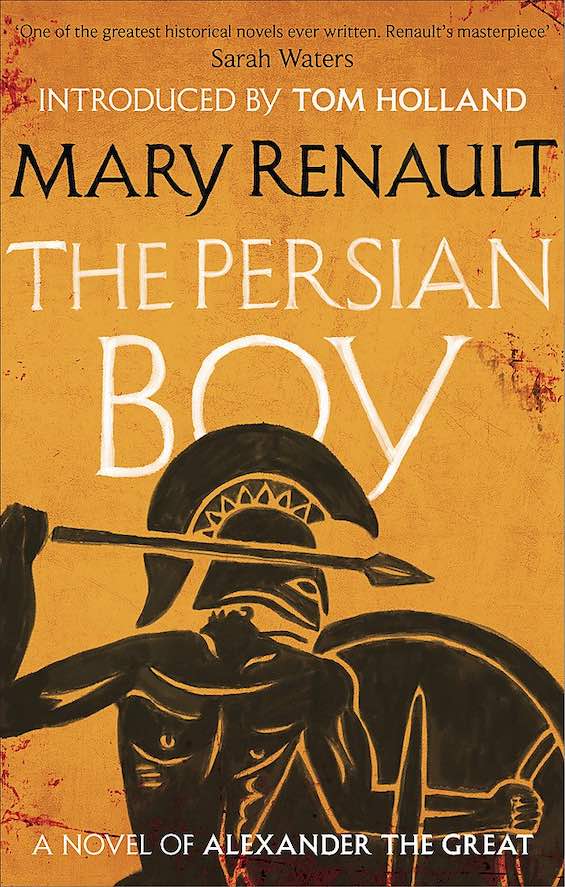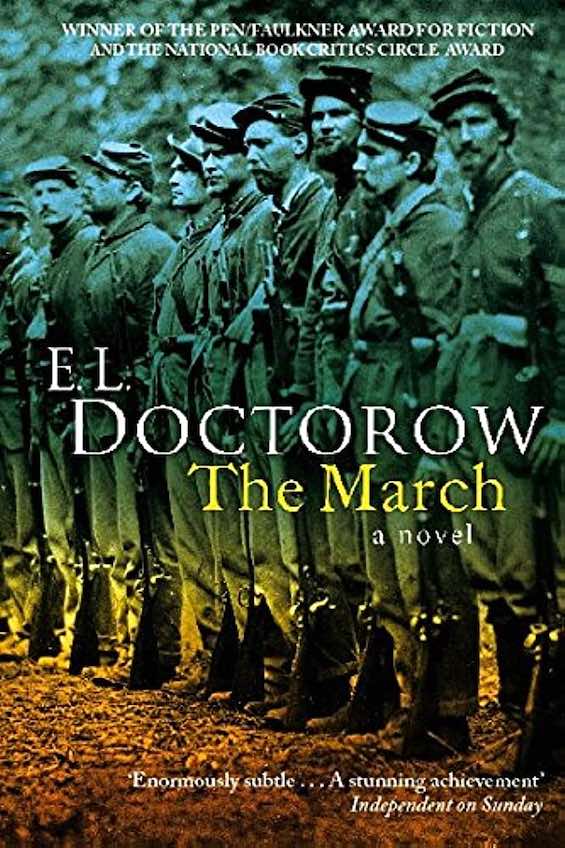
We remember Sherman’s March largely because of the dramatic scene portraying the burning of Atlanta in the blockbuster 1939 film Gone With the Wind. It was the top-grossing film of all time when adjusted for inflation, and it’s still popular online. But that horrific scene when the second city of the Confederacy burned to the ground took place on November 15, 1864. It was only a single episode in William Tecumseh Sherman’s campaign to cripple the ability of the eleven rebel states to wage war.
The March began six months before Atlanta burned, and it climaxed with the surrender of Savannah on December 21, 1864. And E. L. Doctorow’s classic novel, The March, takes up the story only after his army had passed through Atlanta. In soaring prose, Doctorow chronicles the taking of Savannah and the progress of Sherman’s army into the Carolinas in the opening months of 1865. This is historical fiction of the highest order.
Estimated reading time: 5 minutes
A novelist’s treatment of Sherman’s March
An historian might approach an account of Sherman’s March by drawing our attention to the opposing armies’ maneuvers and the body counts at the battles along the way. But any novelist is likely to take a different approach, and E. L. Doctorow does it skillfully. In The March, we witness the unfolding campaign both through Sherman’s eyes and those of one of his generals—and from the perspective of common soldiers, both Federal and Confederate, as well as a brilliant Union surgeon, former slaves, a free Northern Black man, a roving war photographer, and the members of a prominent slaveholding family. There’s not a single stereotype in the bunch. It’s a subtle approach, bringing to light the cost of war on individuals caught up in it.
The March by E. L. Doctorow (2005) 384 pages ★★★★★
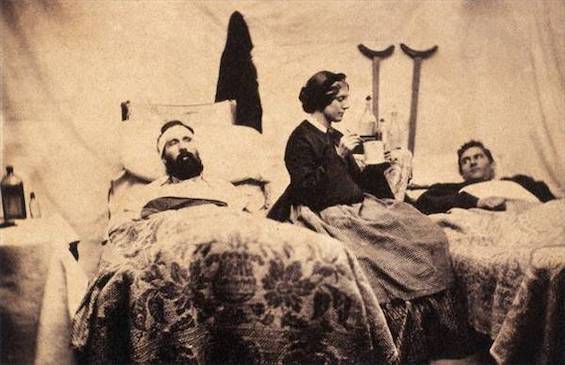
The historical context
Sherman’s March was one of five military maneuvers in General Ulysses S. Grant’s strategy to end the war. Grant’s troops, numbering more than half a million men, were deployed across the Confederacy, from the Mississippi River to Northern Virginia. Grant himself took command of the largest of the five armies in the field to confront Robert E. Lee and take Richmond, the Confederate capital. And William Tecumseh Sherman led the campaign to rage through the South from west to east. In early May 1864, when he set out for Georgia, his troops were encamped near Chattanooga, Tennessee, 366 miles from Savannah. Combined with other forces Grant placed under his command, Sherman led a total of 100,000 soldiers on his march through the South.
Sherman’s mission was to execute a “war of exhaustion” that would deny the Confederacy the ability to wage war. He was to tear up the railroad lines, destroy the factories, burn the cities, cripple the rebels, and reduce the breakaway states’ resources by living off the land. This was a lot like a modern scorched earth warfare. It was a strategy designed to reduce the South’s capacity to feed and arm its troops—as opposed to a “war of attrition,” in which an army seeks to wear out the enemy’s forces with constant attacks.
Novels about the Civil War
Search the phrase “american civil war books,” and Amazon will offer you 20,000 choices. (The number shrinks to 8,000 if you substitute the word “novels” for “books.”) With the possible exception of World War II, no episode in American history has attracted more attention from writers than the civil war that tore apart the United States from 1861 to 1865. And that conflict has given rise to a long list of popular novels, including some of the best-remembered in American literature. In addition to E. L. Doctorow’s The March, they include the following:
- Geraldine Brooks, March (which is about Louisa May Alcott’s father, not Sherman’s March)
- Stephen Crane, The Red Badge of Courage
- William Faulkner, The Unvanquished
- Shelby Foote, Shiloh
- MacKinley Kantor, Andersonville
- Margaret Mitchell, Gone With the Wind
- Michael Shaara, Killer Angels
About the author

E. L. Doctorow‘s (1931-2015) obituary in the New York Times characterized him as “a leading figure in contemporary American letters whose popular, critically admired and award-winning novels — including ‘Ragtime,’ ‘Billy Bathgate’ and ‘The March’—situated fictional characters in recognizable historical contexts. . . The author of a dozen novels, three volumes of short fiction and a stage drama, as well as essays and commentary on literature and politics, Mr. Doctorow was widely lauded for the originality, versatility and audacity of his imagination.
“Winner of the PEN/Faulkner Award for Fiction (also won by ‘Billy Bathgate’) and the National Book Critics Circle Award for fiction (also won by ‘Ragtime’ and ‘Billy Bathgate’), a finalist for the National Book Award (won by ‘World’s Fair’) and the Pulitzer Prize, ‘The March’ was widely recognized as a signature book, treated by critics as the climactic work of a career.”
For related reading
Be sure to check out March by Geraldine Brooks (The untold tale of the absent father in “Little Women”), which is also about the Civil War.
I’ve also reviewed the author’s less celebrated novel, Homer & Langley (E. L. Doctorow on the legendary Collyer brothers).
You’ll find other good books on similar topics at:
- Great war novels reviewed here
- 20 most enlightening historical novels
- Top 10 great popular novels
- Top 20 popular books for understanding American history
And you can always find my most popular reviews, and the most recent ones, on the Home Page.

